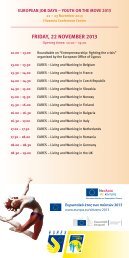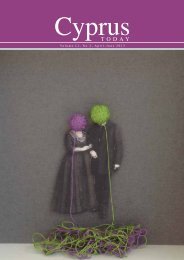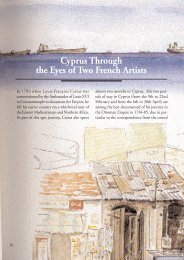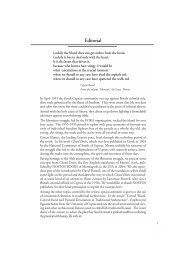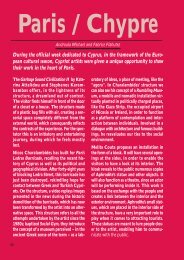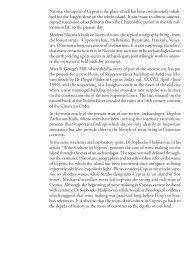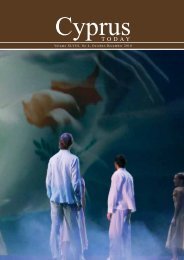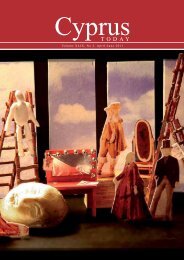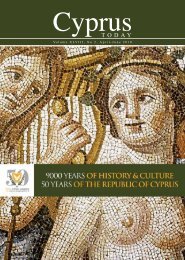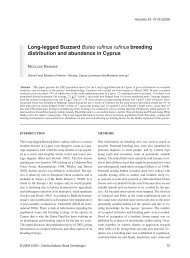Editorial
Editorial
Editorial
Create successful ePaper yourself
Turn your PDF publications into a flip-book with our unique Google optimized e-Paper software.
of quantity in big orchestras, Eastern music<br />
discovered it by dividing the quality into smaller<br />
melodic intervals.<br />
Many ancient pieces have been found on papyrae<br />
as well as in engraved form. From classic ancient<br />
times the melody for the first stasimo of Orestis<br />
of Euripides has been preserved and partially<br />
one stasimo from Ifigenia en Avlides. From<br />
Hellenic period parts of tragedies have been<br />
preserved, the Hymn to Asklipios and some<br />
instrumental pieces. From the latest Hellenic<br />
period we have the works of Athineos and<br />
Liminios. From the Roman period we have<br />
in perfect condition Epitafios of Sikilos, the<br />
call to the Muse and to Kalliopi, the Hymn<br />
to Sun and to Nemesis of Mesomides as well<br />
as many other vocal and instrumental extracts.<br />
A Christian hymn to the Holy Trinity of the<br />
3rd AC century was also found written in the<br />
ancient musical notation (parasimantiki).<br />
We are in a position to perform these pieces<br />
even today thanks to the great research of many<br />
ancient harmonic authors, like Aristoxenos,<br />
Euklides, Ptolemeos, Kleonides, Gavdentios,<br />
Voithios and mainly Alipios, who provides us<br />
with charts with all the symbols of parasimantiki<br />
in the fifteen tones and three genuses.<br />
Below we have Epitafios of Sikilos, a piece which<br />
was found on an engraved plaque in Aidinio,<br />
near Trallis. It is dated around the 2nd BC century<br />
and it is of an unknown composer.<br />
The first 5 verses form an introduction without<br />
music, as well as the last one, which is only<br />
found partially. This piece is written in lonios<br />
tone, Lydios mode.<br />
In diatonic genus and in a disjunct system.<br />
Although it does not seem to follow a certain<br />
tempo it has a rhythm in dactylic genus.<br />
ŸÛÔ ˙ÂȘ Ó· ¯·›ÚÂÛ·È, ‰ÈfiÏÔ˘ ÌË Ï˘apple¿Û·È, appleÚfiÛηÈÚË Â›Ó·È Ë ˙ˆ‹ Ì·˜. Ô ¯ÚfiÓÔ˜ ÛÙÔ Ù¤ÏÔ˜ Ì¿˜ ʤÚÓÂÈ<br />
87



